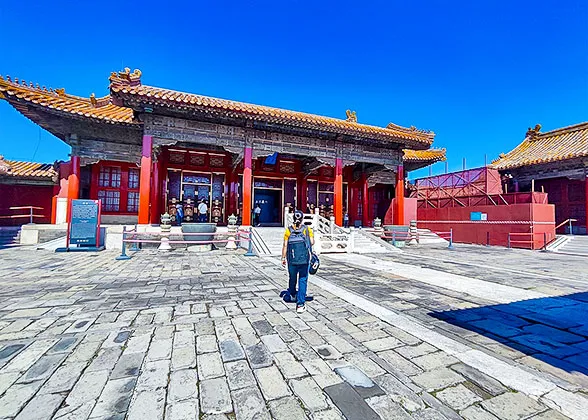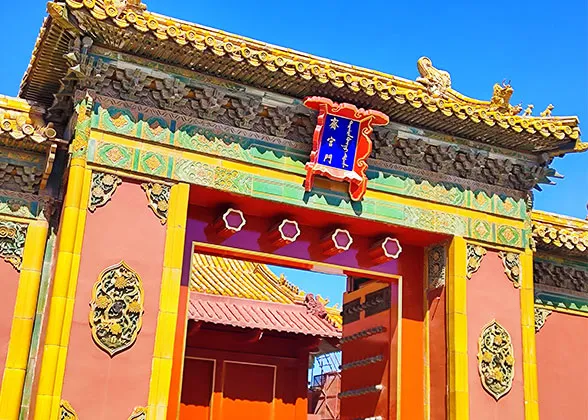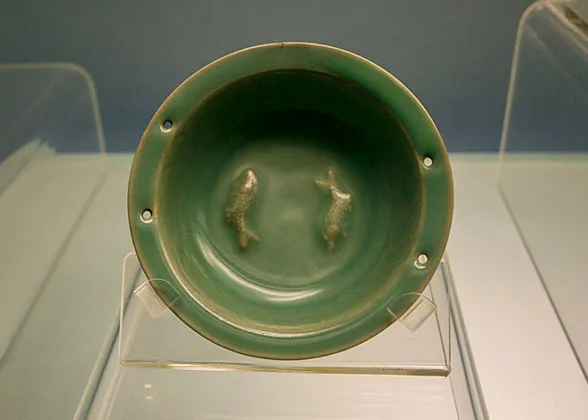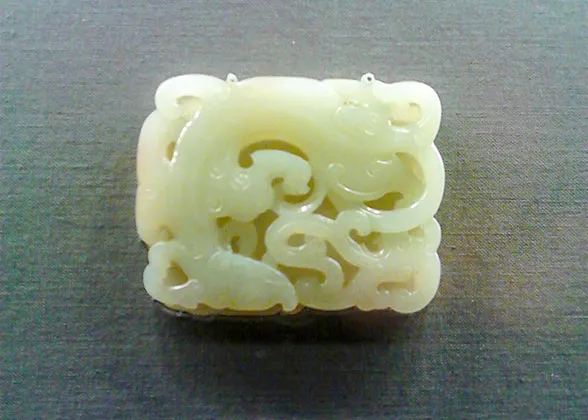Palace of Abstinence (Zhaigong)
Palace of Abstinence (Zhaigong) is to the southwest of the Six Eastern Palaces in the Forbidden City. Before every grand ceremony of worshiping heaven and earth, emperors would stay here for total abstinence from earthly pleasures. Now, it is a temporary exhibition hall and tourists can appreciate various cultural relics here.
|
|
When and why was the Palace of Abstinence built?
It was built in 1731 by Emperor Yongzheng (1678-1735) as a safer alternative to the the Temple of Heaven (Tiantan) to undergo abstinence before worship ceremonies.
Ancient Chinese emperors were required to worship the heaven and earth, in order to pray for either a bumper harvest or abundant rainfall for the country. Before the ceremony, the emperors needed to spend 1 to 3 days fasting, to show the imperial respect to the god.
From 1644 to 1731, it was in the Temple of Heaven that emperors performed abstinence. However, after Emperor Yongzheng (1678-1735) just came into power, many other royal members still cast greedy eyes on his throne. The long distance from the Forbidden City to the Temple of Heaven, which is more than 5km (3 mi) away from the Forbidden City, as well as the several days’ staying alone in the Temple of Heaven, could create chances for others for assassination.
To ensure his safety, in 1731, Yongzheng decided to build a new site for abstinence just inside the Forbidden City, and this place was the Palace of Abstinence.
What did emperors do in the Palace of Abstinence?
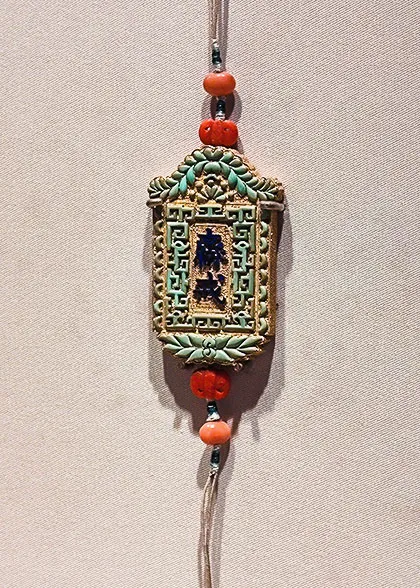 |
| Board to Wear During Abstinence |
During the emperor's fasting period in the Palace, he was required to bathe, change into clean clothes, and stay alone most of the time, shunning all desires. No legal matters, no banquets, no music, no concubine accompanying, no visiting the sick or attending funerals, no alcohol, no meat, and no grave visits. It was a time of deep reflection and purification.
To create a solemn atmosphere throughout all the Forbidden City, during fasting, emperors, accompanying ministers, and the attendants would wear a board upon which a piece of yellow paper with the duration of abstinence. Other palaces were required to hang this board on their curtains. In addition, a bronze man sculpture with the same board in his hands and a warning wooden plate would be placed on the front stairs at the left side of the Palace.
What can be seen inside the Palace of Abstinence now?
Octagonal Dragon Caisson Ceiling
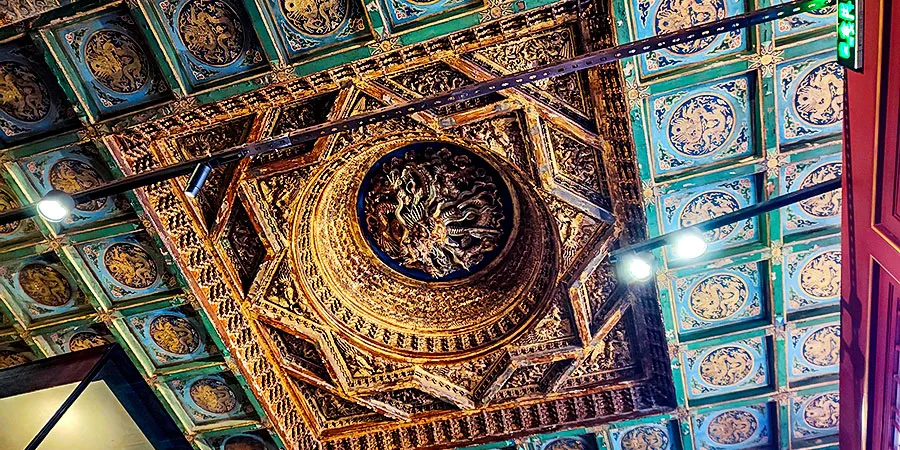 |
| Octagonal Dragon Caisson Ceiling |
The Palace of Abstinence is a rectangular palace consisting of a front hall and a back hall. Special attention should be paid to the main room of the front hall, where the octagonal caisson ceiling stands out.
Crafted from rare golden-threaded Phoebe wood and fully gilded, the ceiling showcases a dragon swallowing a pearl, featuring exquisite details in its whiskers, and mane. This masterpiece, accompanied by surrounding dragon-themed motifs, fosters an awe-inspiring ambiance and symbolizes the emperor's aspiration to converse with celestial deities through his dragon embodiment.
Temporary Exhibitions
|
|
Temporary exhibitions in the Palace of Abstinence usually last for one to four months. So far, this palace has displayed cultural relics of various themes, including Longquan celadon, statues of Buddha, ancient Chinese furniture, redwares, terracotta figures and other cultural relics. The latest information regarding exhibitions in the Palace of Abstinence can be found on the official Palace Museum website.
Theft in 2011
At around 8 o'clock on May 9th, 2011, when the staff was routinely checking the Palace of Abstinence, they were shocked to find a big hole in the wall of the back hall. After immediate lockdown and careful check, they found that nine exhibited overseas luxuries had been stolen, including eight gilded cosmetic cases and one gilded handbag.
These precious exhibits, totally valuing tens of millions China Yuan nowadays, were made between the 1930s and 1980s by top luxury brands, such as Cartier, Van Cleef & Arpels, Faraone, Tiffany and Hermes. Most of them were inlaid with diamonds, emeralds, enamel or sapphires. Although the handbag and one cosmetic case were found near the Palace, they were partially damaged.
On May 11th, police arrested the burglar Shi as his fingerprint were on the glided tiles. Shi said that on May 8th, he hid in the west side hall of the Palace of Abstinence until 22:00 and then broke the window on the north side. Once entering the exhibition hall, Shi smashed the glass showcase and stole nine exhibits. Then he escaped along the roof. To date, three of the exhibits have not been recovered.
How to visit the Forbidden City
- Last updated on Oct. 09, 2025 by Jally Zhang -
